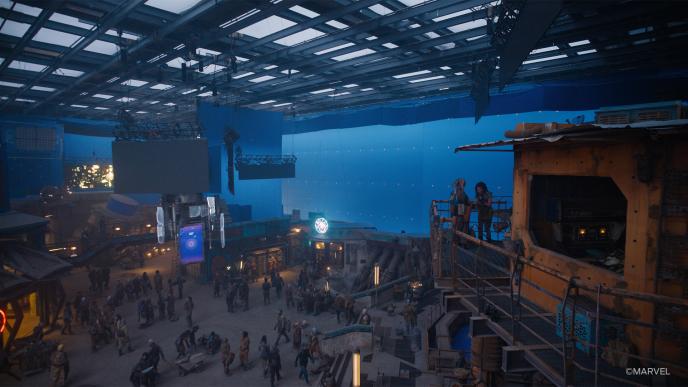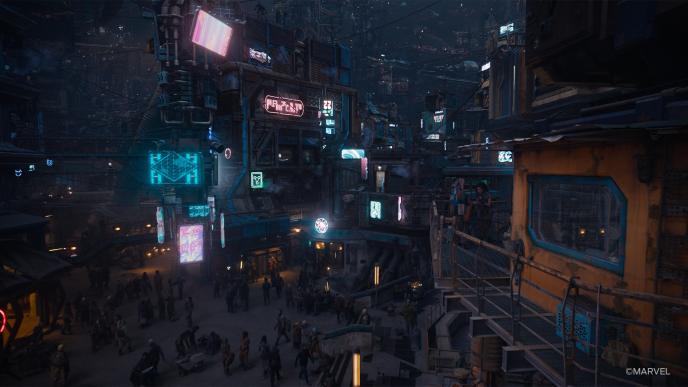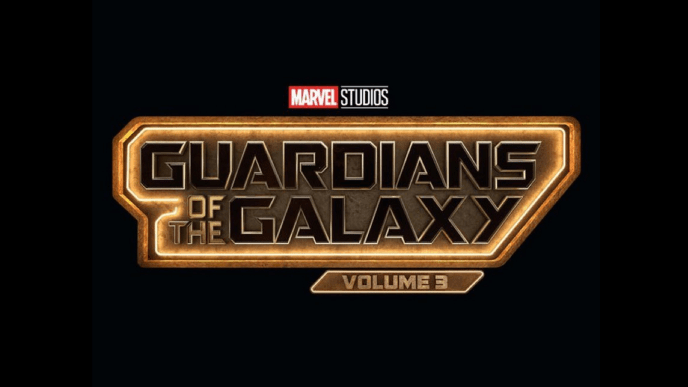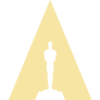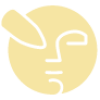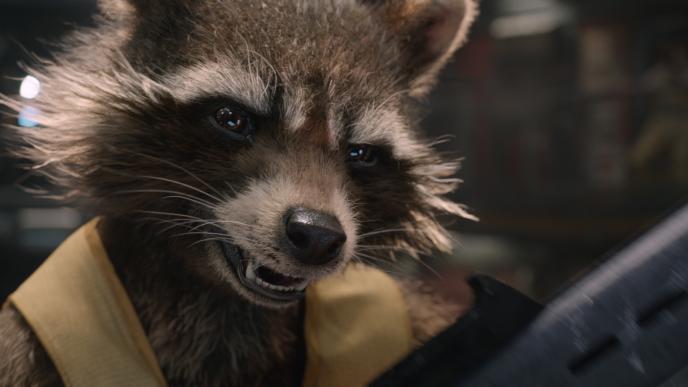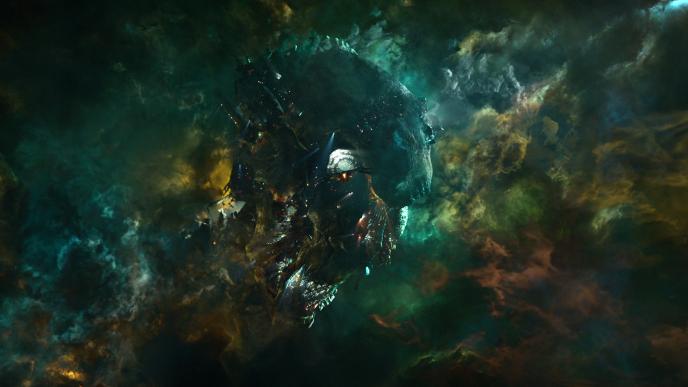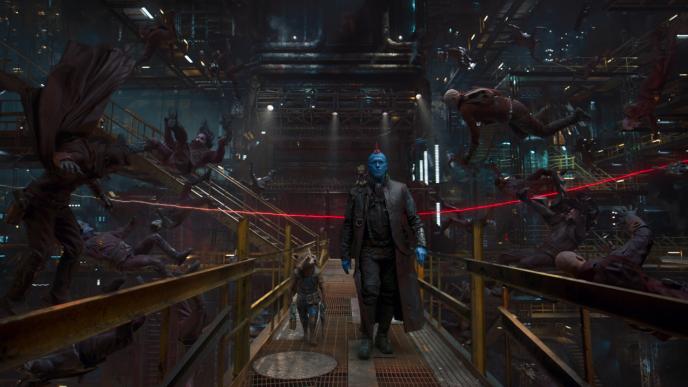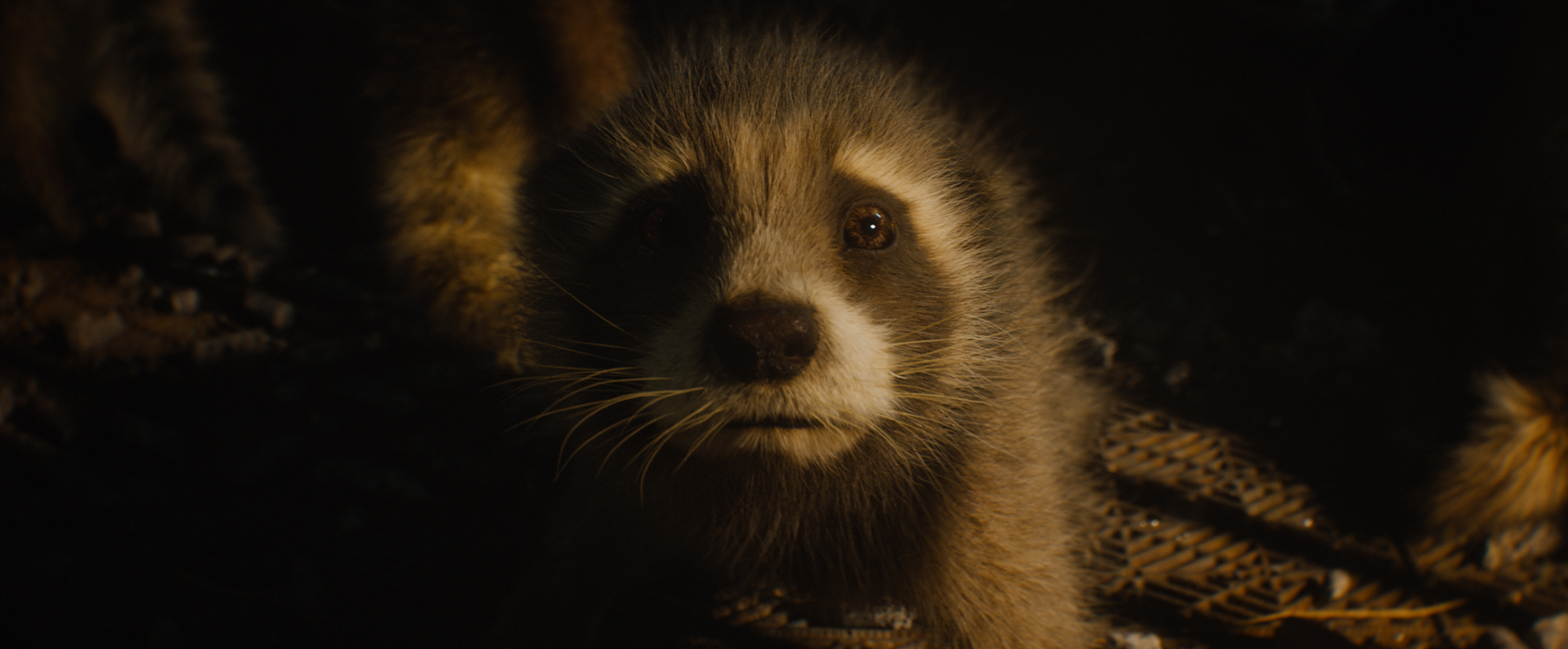
Guardians of the Galaxy Vol. 3
Framestore’s teams in London, Montréal, Vancouver and Mumbai crafted a menagerie of CG characters for the final instalment of James Gunn’s Guardians of the Galaxy trilogy, each one demonstrating exactly why the studio has such a reputation for stellar CG creatures and soulful character animation.
Making sure Rocket rocks
Framestore brought Rocket to the big screen with the first Guardians instalment way back in 2014, and have upgraded, aged and re-outfitted him on several different adventures. Vol. 3 demanded no fewer than six iterations, from adorable kit to wide-eyed adolescent seeing his world crumble before him to the hardened, wisecracking trash panda the world knows and loves. “This is Rocket’s story so we knew we had to knock it out the park,” says VFX Supervisor Alexis Wajsbrot. “We took everything into consideration, from his fur and how it changes and grows over time to the way his gait and physiology shift from a kit scampering on four legs to a form that gradually becomes more bipedal.” Beyond movement, biology and morphology Rocket demanded a tremendous amount of emotional depth and nuance. “We’re not just seeing him grow physically, but also shifts in his character and perceptions as events unfold around him,” says Wajsbrot. “That’s where the skill of our animators comes in - being able to convey a world of detail with a subtle change in body language, or a fractional widening of the eyes.”
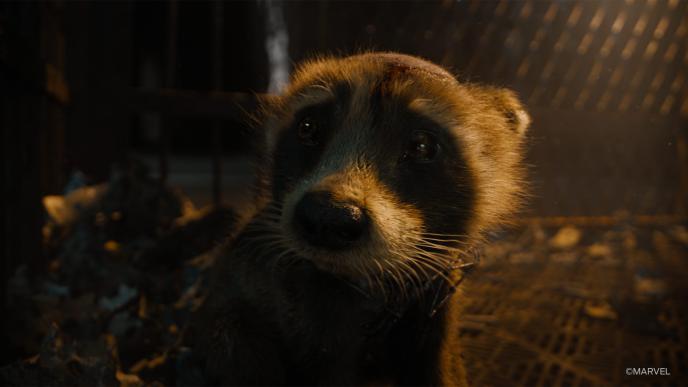
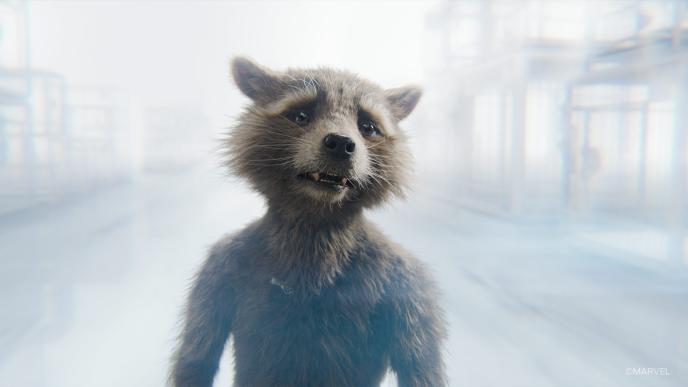
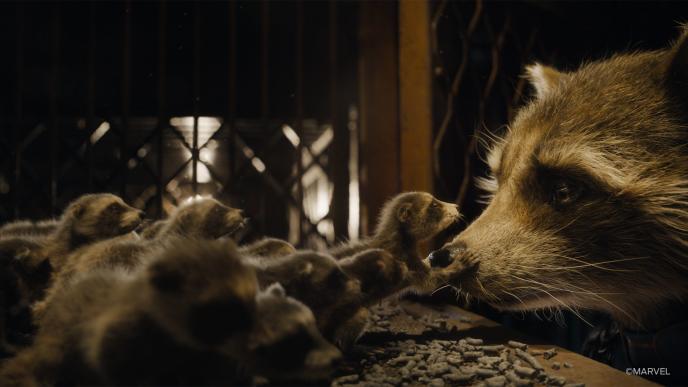
Good dog? BEST dog!
Framestore’s teams in London, Montréal, Vancouver and Mumbai crafted a menagerie of CG characters for the final instalment of James Gunn’s Guardians of the Galaxy trilogy, each one demonstrating exactly why the studio has such a reputation for stellar CG creatures and soulful character animation.
While characters like Rocket, Groot, Lylla and Lambshank offered scope for a degree of artistic licence, one of the show’s standout CG cast presented rather different CG characters: Cosmo, the telekinetic space dog.
Voiced by Maria Bakalova, Cosmo’s shift from secondary character in the Guardians of the Galaxy Holiday Special to top dog meant VFX Supervisor Stephane Nazé and his team knew there’d be nowhere to hide. Using reference footage and photography, the team painstakingly recreated the dog from skeleton up, meticulously focusing on tiny characteristics including fur pattern quirks and barely-perceptible details like scurf, dust and ‘dead’ fur.
Having conjured the perfect photoreal canine, the team’s next challenge was how to balance this true-to-life specimen with the fact that Cosmo talks, interacts with the show’s cast and has the power to move objects with her mind. “As soon as you give an animal human - or superhuman - traits you risk losing any sense of realism,” Nazé explains. “The animation team spent hours and hours researching canine expressions and poses that could equate to human emotions - joy, surprise, curiosity etc. - so as to stay true to what people know and love about dogs while allowing for a subtle and often humorous performance. Since Cosmo ‘talks’ using a speaker device built into her space suit, the team had to combine deft, careful expressions with pitch-perfect timing to deliver a totally believable performance.”
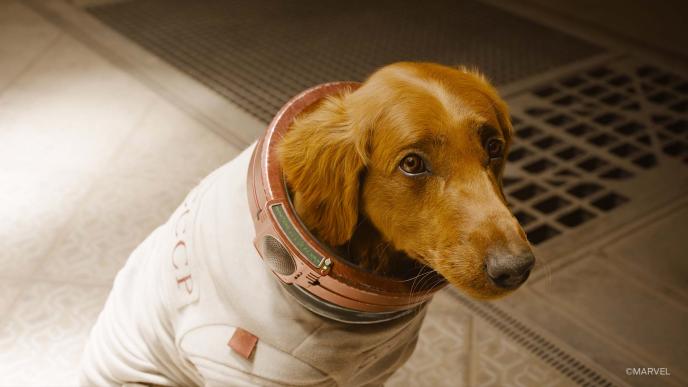
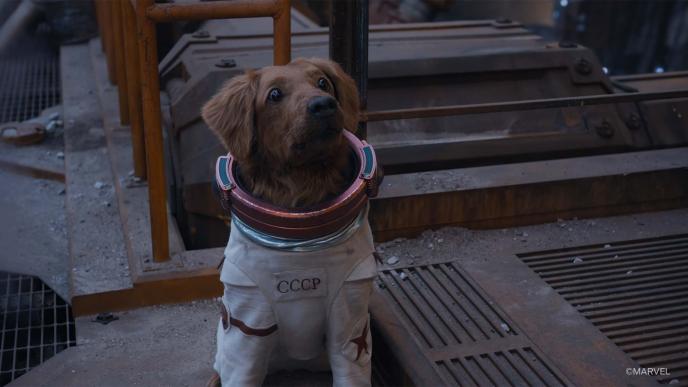
Hand-in-hand with these efforts came the need to deftly interpret Bakalova’s on-set performance. “The team pored over the plate photography,” says Nazé. “They really drilled into Maria’s moment-by-moment performance, analysing every move and expression so as to imbue Cosmo with her personality and emotion. To me it’s this combination that allowed us to really strike gold with Cosmo: the photoreal detail of the build, the keen observation of true-to-life canine behaviour and then channelling a sense of Maria’s unique, emotional on-set performance.”
Creatures feature
Elsewhere, the team was tasked with creating a range of other set pieces showcasing the sinister High Evolutionary’s lack of humanity. While Rocket’s interactions with his friends - Lylla, Floor and Teefs - represents a masterclass in character animation and heartstring-tugging storytelling, other sequences conjure bleaker moods. “The transformations were difficult,” says Wajsbrot. “James [Gunn] sent us reference images of kids’ toys being deformed in weird, ugly ways. With the help of our visdev team we worked on having different creatures - a kangaroo, a monkey, a turtle - transform in a manner that seemed wrong and visually painful. The aim wasn’t just to be strange or visually distinctive for the sake of it, but to serve the story by showing just how inhumane these experiments truly are.”
As well as focusing on individual characters or intimate shared moments, Wajsbrot’s team were also charged with delivering the stampede sequence, in which the Guardians and some 500 creatures flee a dramatic explosion. “Crowds can be challenging, but when you have that much going on and that many characters… that was really something,” says Wajsbrot. “There’s so much interaction there - monkeys and turtles on top of tapirs, the Guardians holding CG animals, everyone running wildly amid the fire, debris and destruction while Cosmo holds it all together with her forcefield. That was a tour-de-force that put our animation, FX, crowd and comp teams all through their paces.”
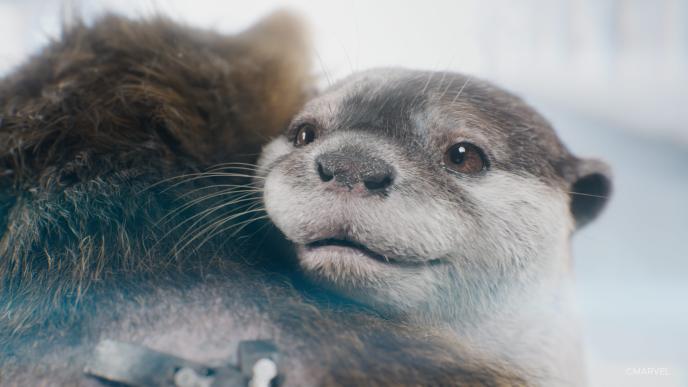
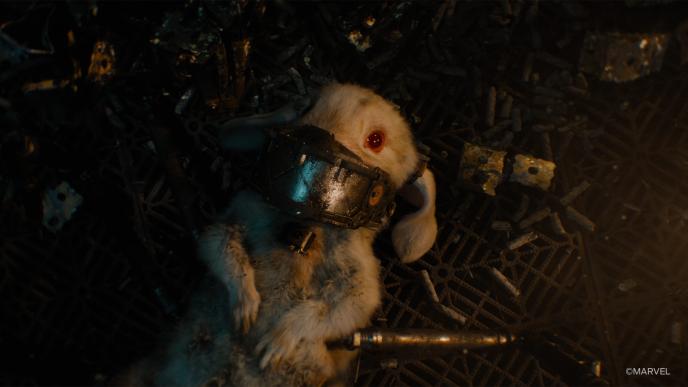
Groot Expectations
Having worked on Groot as a hoary adult, adorably baby and surly teen, the Framestore team were keen to reengage - this time working on an athletic, energetic, prime-of-life iteration. “This was the college ball player version of Groot,” says Nazé. “While we had reference from previous films in terms of certain looks and textures, his range of movement and articulation was all new. James [Gunn] provided reference footage, explaining how this Groot should move and behave. The team rotoscoped James’s videos so we could create perfect side-by-side comparisons of James and Groot.” The team worked to create an asset that, despite being made of bark, wood, vines and tendrils, could move effortlessly, and also give this wholly CG character a sense of weight, texture and true-to-life on-screen physicality.
The painstaking care taken over CG assets like Groot and Rocket paid dividends, meaning Framestore’s team in Vancouver - who led on Groot’s journey to Counter-Earth and the emotional scene where Rocket lies prone on a medical bed - could pick up the reins and deliver their own standout moments. “It was a seamless process,” says VFX Supervisor Ross McCabe. “The Groot and Rocket rigs were detailed and incredibly robust which made for precise control and wonderfully smooth animation. Similarly, the calibre of Jon Allen’s postvis was hugely beneficial and really sped up the process when it came to blocking the animation finals.”
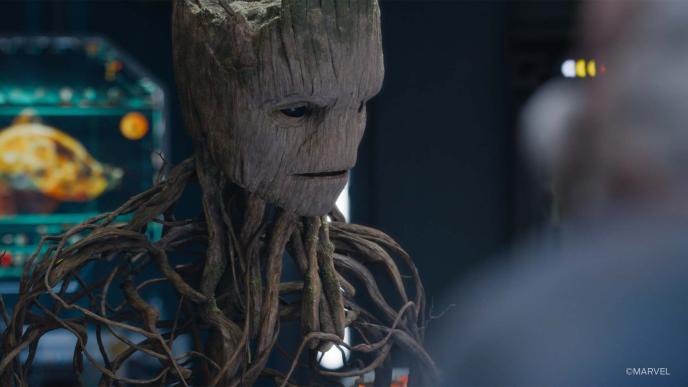
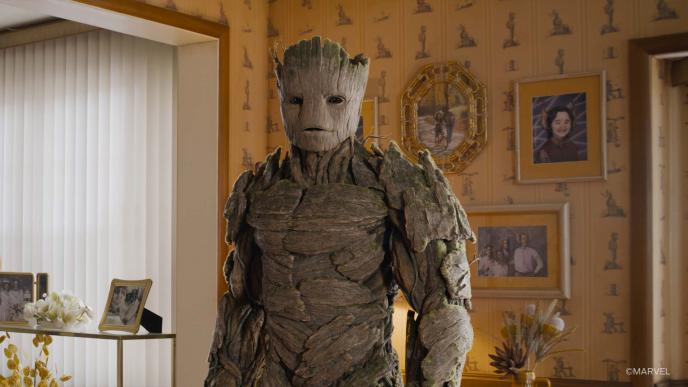
Knowhere like home
Framestore was no stranger to Knowhere, the Guardians’ epic, neon-lit HQ. While the MCU’s first iteration had relied heavily on DMP, Nazé and his team adopted a different approach when rebuilding the Thanos-ravaged (and soon-to-be Adam Warlock-ravaged) city. “This time around we built Knowhere in 3D” explains Nazé. “This gave us incredible flexibility, and meant the camera could be placed anywhere at any moment and matched seamlessly.” Knowhere was effectively divided into three sub-environments: the set extensions connecting to the plate photography, additional digital set dressing, and the details found in the distance. "This allowed us to fine-tune any part of the environment while optimising render time,” says Nazé. “We were able to use the environment’s geometry to our advantage and only render what was specifically required for the shot in question.”
As well as world-class VFX and animation teams in London, Montreal, Vancouver and Mumbai, Guardians of the Galaxy Vol. 3 called on a range of Framestore including its in-house art department, visdev teams, previsualisation and postvis experts - a fitting team effort to send the galaxy’s greatest heroes out in style.
